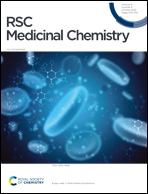Current leishmaniasis drug discovery
Abstract
Leishmaniasis is a complex protozoan infectious disease and, associated with malnutrition, poor health services and unavailability of prophylactic control measures, neglected populations are particularly affected. Current drug regimens are outdated and associated with some drawbacks, such as cytotoxicity and resistance, and the development of novel, efficacious and less toxic drug regimens is urgently required. In addition, leishmanial pathogenesis is not well established or understood, and a prophylactic vaccine is an unfulfilled goal. Human kinetoplastid protozoan infections, including leishmaniasis, have been neglected for many years, and in an attempt to overcome this situation, some new drug targets were recently identified, enabling the development of new drugs and vaccines. Compounds from new drug classes have also shown excellent antileishmanial activities, some of the most promising ones included in clinical trials, and could be a hope to control the disease burden of this endemic disease in the near future. In this review, we discuss the limitations of current control methods, explore the wide range of compounds that are being screened and identified as antileishmanial drug prototypes, summarize the advances in identifying new drug targets aiming at innovative treatments and explore the state-of-art vaccine development field, including immunomodulation strategies.



 Please wait while we load your content...
Please wait while we load your content...